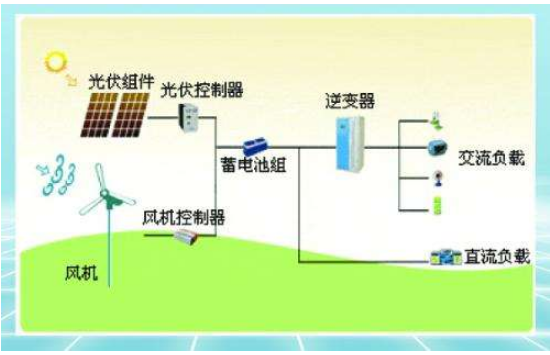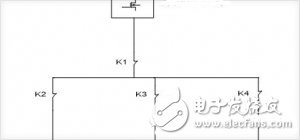Micro-grid and off-grid photovoltaic power generation systems have a certain degree of similarity to a large extent, but the two are not exactly the same, especially in the actual should pay attention to a lot of problems, the following is a simple analysis of both So that everyone can understand the application.
Microgrid
The microgrid system is a new type of network structure. It is a system unit composed of distributed power, load, energy storage system and control device. It is an autonomous system that can realize self-control, protection and management. It can be connected to the external power grid. Run, you can also run it in isolation.
The microgrid system is a concept compared with the traditional large-grid system. It refers to a network composed of a plurality of distributed power sources and their associated loads according to a certain topological structure, and is connected to a conventional large power grid through a switch.
The core equipment in the microgrid system is distributed power and energy storage systems, including photovoltaic grid-connected inverters, wind-grid grid-connected inverters, diesel engines, PCS and BMS.
In recent years, with the rapid development of microgrid systems, grid-connected inverters have been given a new definition: distributed photovoltaic power. It can be used as the main power source of the microgrid system, and it is one of the core technologies of the whole microgrid system. It can also be used as a supplementary power source for the microgrid system due to the special nature of its power supply (current source).
PCS, the energy conversion system, is a new type of distributed power source that is very flexible and powerful in recent years. It is also an energy storage system. As a four-quadrant inverter, it can realize the grid-connected inverter function, the grid-connected rectification charging function, and the off-grid independent inverter function.
In the microgrid system, the capacity configuration of each distributed power source has certain principles, otherwise it will cause excessive power supply or lack of power supply.
The capacity of the grid-connected inverter should be less than or equal to the total load capacity. The load capacity is optimal. It should not be too small or too high. If it is too high, the excess energy cannot be absorbed, which may cause the system to collapse. In recent years, the research results show that when the capacity of the grid-connected inverter is greater than the total capacity of the load, if there is a PCS as the supporting source at this time, the excess power of the grid-connected inverter will be fed into the PCS, so that the PCS is in the "off-network charging" state. This state is not stable. There is no real effective control method at present. Therefore, it is recommended that the capacity of the grid-connected inverter is less than or equal to the total load capacity.
The PCS capacity should be set at 1.5 times the total load capacity, but the capacity of the battery needs to be configured according to the capacity of the system to withstand 3 to 5 rainy days. Although the grid-connected inverter can also supply power to the load, the microgrid system runs most of the time at night, and the grid-connected inverter cannot work. Therefore, most of the power of the micro-grid system is provided by the PCS. Therefore, the capacity configuration of the PCS needs to take into account the continuous rainy days and night conditions.

As shown in Figure 1, the architecture diagram of the microgrid system is connected to the system bus by the grid-connected inverter and the PCS, and the load is hung on the bus.
600v DC Electronic Load can be switched quickly between different values in the same operating mode, including CC dynamic mode, CV dynamic mode, CR dynamic mode and CP dynamic mode, CC/CR high speed dynamic mode up to 50kHz. This function is suitable for transient test of power supply, test of battery protection characteristic and battery pulse charging etc. Dynamic mode test has continuous mode, pulse mode and toggle mode.
Additionally , programmable DC electronic load can also have 200V DC Electronic Load and 1200V DC Electronic Load for more options.
kindly check below features for your reference:
â— Flippable front panel and color touch screen allow convenient access and operation
â— Provides four kinds of basic working mode such as CV/CC/CR/CP, and CV+CC/CV+CR/CR+CC complex operating modes
â— Adjustable current slew rate, adjustable CV loop speed
â— Ultra high precision voltage & current measurement
â— OCP/OPP testing function
â— 50kHz high-speed CC/CR dynamic mode
â— 500kHz high-speed voltage and current sampling rate
â— Timing & discharging measurement for batteries
â— Short circuit test mode
â— Auto mode function provides an easy way to do complicated test
â— Dynamic frequency sweep function for determining worst case voltage peaks*
â— Non linear load mode function makes the simulated loading current more realistic*
â— Supports external analog control function*
â— V-monitor/I-monitor
â— LED load simulation function
â— Full protection: OCP, OPP, OTP, over voltage and reverse alarm
â— Up to 20 units master/slave parallel control
â— Front panel USB interface supports data import and export
â— SCPI language and standard rack size make it ideal for ATE System integration
â— Smart fan control with lower noise and better for environment
â— Multi versions to meet the cost performance and different applications
* Only professional Electronic Load units support these functions
600V DC Electronic Load,programmable dc load,adjustable electronic load,programmable DC electronic load
APM Technologies Ltd , https://www.apmpowersupply.com